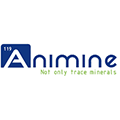 The following changes will be implemented:
The following changes will be implemented:
- Maximum copper supplementation levels will be even more restricted in piglet feeds:

| Before | After |
| Piglets up to 12 weeks: 170 mg/kg Cu (total) | Suckling and weaned up to 4 weeks after weaning: 150 mg/kg Cu (total) |
| From 5th week after weaning up to 8 weeks after weaning: 100 mg/kg Cu (total) |
- Oxidation state and copper concentration in each compound will be more strictly defined:
| Oxidation state | Minimum Cu content | |
| Copper(II) oxide | Cu2+ | 77 % |
| Copper(I) oxide (CoRouge®) | Cu+ | 73 % |
| Copper(II) carbonate | Cu2+ | 52 % |
| Copper(II) chloride | Cu2+ | 36 % |
| Copper(II) diacetate | Cu2+ | 31 % |
| Copper(II) sulphate | Cu2+ | 24 % |
| Copper(II) chelate of glycine (solid) | Cu2+ | 15 % |
| Copper(II) chelate of amino acids | Cu2+ | 10 % |
| Copper(II) chelate of protein hydrolysates | Cu2+ | 10 % |
| Copper(II) chelate of glycine (liquid) | Cu2+ | 6 % |
- Copper compounds will not be used in water for drinking.
With such progress in the definition and characterization of supplemented trace minerals, European regulation helps the feed industry to select the best copper source for optimal bioavailability and intestinal health. CoRouge®, as a unique form of copper(I) oxide, has been authorised in the European Union in December 2016 with latest requirements on proofs of identity, safety and efficacy.
July 26, 2018 - Animine




